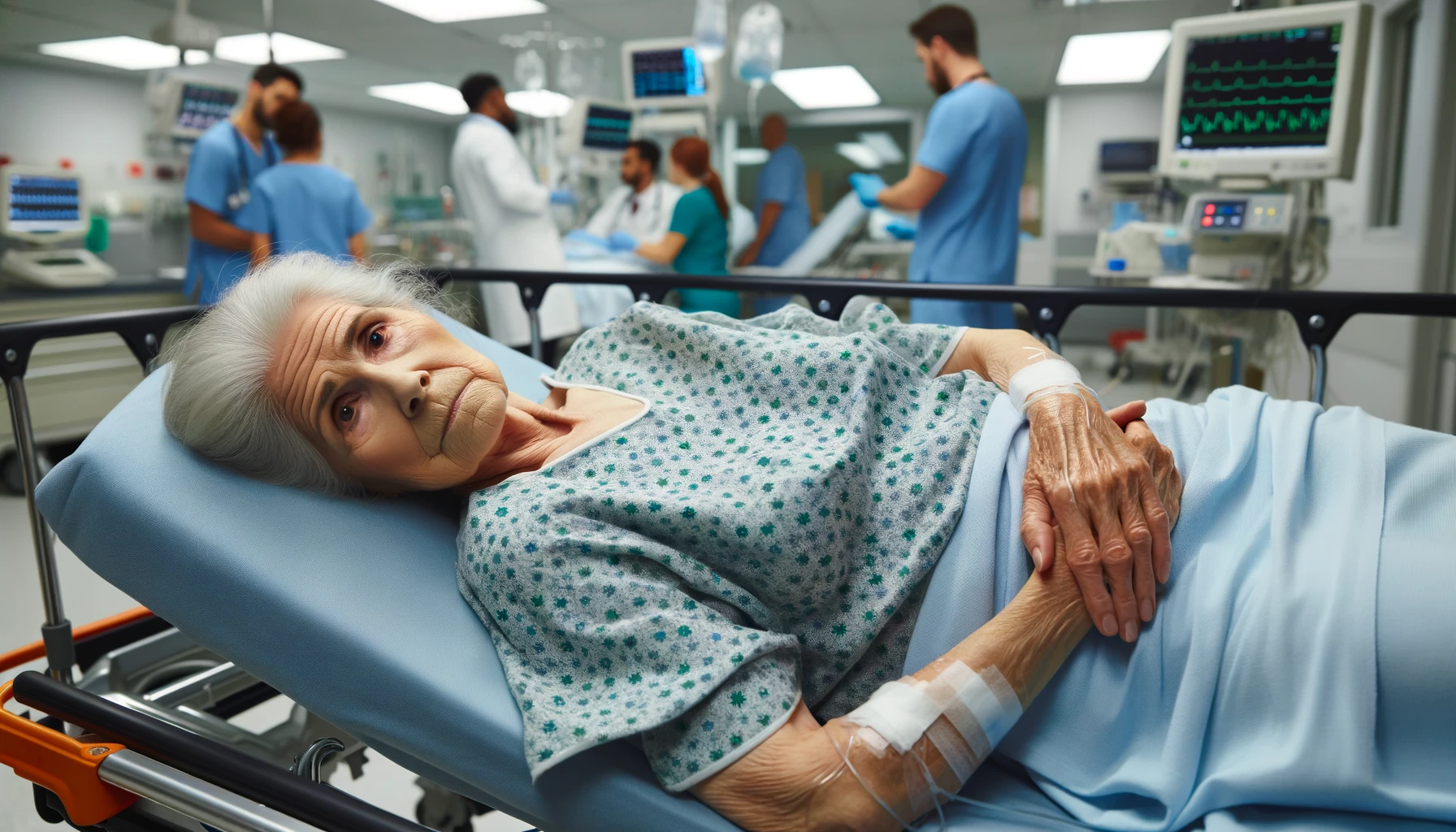
Stroke: Prevention Is Better Than Cure
Kay
- 0
What I am about to say is extremely important. Pay attention and you might just save a life by learning a little bit more about stroke. (Don’t say you didn’t have a hand in saving someone’s life after reading this article.) Grab onto your seat and let’s talk about strokes.
What is a Stroke?
Definition and Overview
A stroke occurs when the blood supply to a portion of the brain is interrupted. Lack of blood means lack of oxygen to brain cells. The longer this persists, the greater the cell loss is going to be – Traffic on your brain highway system needs to get moving again, pronto!
Types of Stroke
Ischemic Stroke
This is the most prevalent form. It results from an obstruction in an artery supplying blood to the brain. Imagine a pipe of carrageenan that clogs, halting water entering your sink.
Hemorrhagic Stroke
Less frequent but more severe, this can also result from a blood vessel in the brain bursting. It’s a little like having a water balloon pop inside your head – yikes!
Transient Ischemic Attack (TIA)
A TIA, which is essentially a temporary blockage, is also known as a mini-stroke; it’s your brain’s way of calling attention to what isn’t going right.
Causes of Stroke
Risk Factors
Hypertension
High blood pressure is a big risk factor. You’re just squeezing too much water through the hose, which means that at some point, something has to break.
Diabetes
This condition can create scattered areas of weakness within your blood vessels, which would make blockages more likely to happen (that car is already rusty, right?)
High Cholesterol
This excess cholesterol in your system can then start accumulating in your arteries, hardening them like cholesterol inside an artery. Blood flow seems restricted, much like sludge clogging up a drain.
Smoking
Your blood vessels become dirty when you smoke, and your blood becomes more likely to clot. You’ve thrown dirt in that machine – the machine is going to run badly.
Obesity
Being overweight increases your risk of heart and blood vessel problems because it makes your heart and blood vessels work harder – rather like lugging too many groceries at once on a trip to the store.
Symptoms of Stroke
Sudden Numbness or Weakness
This can manifest in your face, arm or leg (usually one-sided). It is as if your body unexpectedly felt like taking a nap on its side.
Confusion or Trouble Speaking
You can no longer speak or understand speech as your brain’s language centre is going haywire.
Vision Problems
You might have trouble seeing with one or both eyes. It’s like someone turned down the dimmer switch and the lights got a bit dimmer.
Severe Headache
If, say, he started to suffer a pounding headache with no apparent cause. A sudden thunderstorm, without warning.
Diagnosis of Stroke
Physical Examination
During the physical examination of an individual who is suspected of having a stroke, the healthcare experts speed up the physical examination process, and make note of various important symptoms and signs. This step helps a physician to rapidly determine probability of stroke and the applicable management options.
Below is an instruction that describes a task, paired with an input that provides further context. Write a response that appropriately completes the request. During a physical examination, there are three main steps that healthcare professionals take:
Step one: The physician inspects the patient.
Step two: The physician palpates the patient.
Step three: The physician percussion the patient.
Here is an instruction that describes a task, paired with an input that provides further context. Write a response that appropriately completes the request.
Following is an instruction that describes a task, paired with an input that provides further context. Write a response that appropriately completes the request.
Initial Assessment
They’re the first things that doctors look at when they’re seeing a patient: was the stroke severe? Or not? Is this you, and how much are you here? The first thing doctors look at is the patient’s stage of consciousness to see if the patient is awake, alert and oriented. A person’s level of consciousness provides a good indication of where in the brain a stroke originated.
Checking Vital Signs
Blood Pressure
A high blood pressure reading is a common risk factor for stroke as well as a potentially serious sign of a developing problem.
Rhythm
While an erratic heart beat is normal for most people, it could signal atrial fibrillation and lead to a raised risk of stroke. Respiration rate
Sudden changes in breathing patterns can reveal how the stroke is affecting the brain.
Temperature
Fever might indicate an infection that could complicate stroke treatment.
Neurological Examination
1. Mental Status:
Orientation: What is your name? Where are you? What is the date?
Memory: Doctors will ask the patient to recall a recent event or repeat a group of words to assess short- and long-term memory.
2. Cranial Nerves:
Vision: Checking for changes in vision or visual fields.
Facial Movement: Asking patients to smile or raise their eyebrows to look for asymmetry or weakness.
Speech: Listening for slurred or garbled speech.
3. Motor Function:
Strength: doctors test the strength of the arms and legs by asking the patient to push against their hand or lift their limbs.
Coordination: Using simple tasks such as touching the nose with a finger or heel-to-shin movements.
Balance: Standing or walking tests help determine balance and gait stability.
4. Sensory Function:
Touch: Light touches or pinpricks can test sensitivity in different body parts.
Position Sense: You ask the patient to close their eyes and identify the position of their limbs.
5. Reflexes:
Bicep Muscle Tone: flexing (or ‘making a muscle’) and then testing bicep tone by pushing the arm back down.Deep Tendon Reflexes: using a reflex hammer to tap the tendons, and determining whether the muscles respond appropriately.
Babinski Reflex: Stroke the sole of foot and assess response; paradoxical response to stroke an indicator of neurologic problems.
Other Tests
Glasgow Coma Scale (GCS): This scale evaluates eye, verbal and motor responses to determine a patient’s level of consciousness.
NIH Stroke Scale (NIHSS): A more detailed scale used with stroke patients to quantify the impairment.
Imaging Tests
CT Scan
This imaging test allows doctors to check whether there are any leaks from hemorrhage or damage to the brain with the power of X-ray vision.
MRI
An MRI is like a picture of the brain. Even though it’s only an image, you can clearly see the problem. It’s a high-def photo.
Blood Tests
These tests help to see if underlying conditions have contributed to the stroke. Checking the oil and fluid levels would be like this.
Treatment of Stroke
Medications
Blood thinners can break up the clots and restore circulation. Think of it the way you’d unclog a kitchen sink – with a plunger.
Surgery
If there’s significant vessel damage requiring a repair, you might need to call in the plumber: a surgeon.
Rehabilitation
Physical Therapy
This will help you get back into shape and help you build up muscle mass. It’s a workout program chosen just for you.
Speech Therapy
However, should you be temporarily speechless, a speech therapist can provide an appropriate assortment of expressions to help you to regain fluidity. They are what one might call a ‘communication coach’.
Occupational Therapy
It helps you relearn everyday activities. It’s like hiring a tutor for everyday activities.
Preventing Stroke
Lifestyle Changes
Healthy Diet
Eating well – plenty of fruits, vegetables and whole grains – does the trick. Or think of filling up your tank with premium gas.
Regular Exercise
Keeping active avoids stasis. It keeps your blood circulating. It keeps your car engine ticking over.
Avoiding Tobacco
Smoke, if you want to have a good machine, better quit. Quitting reduces your risk a lot. Would you pour dirt in your machine? No. You take out any dirt that exists in the machine to be able to use it well.
Limiting Alcohol
Having the occasional drink can help you maintain your blood pressure but not reaching dangerous levels that could lead to a short circuit.
Conclusion
Strokes are serious, but knowledge is power – prevention and treatment depend on knowing what to look for. Watch those risk factors, know the symptoms, seek help if you feel something’s wrong. Keep yourself informed about your health and take care of yourself – your brain will thank you!
FAQs
What should I do if I suspect someone is having a stroke?
Call emergency services immediately. Every minute counts!
Can strokes be hereditary?
So just knowing that family history can mean you’re at higher risk is good.
How can I reduce my risk of having a stroke?
Maintain a healthy lifestyle with a balanced diet, regular exercise, and no smoking.
What are the long-term effects of a stroke?
Effects vary but can include physical and cognitive impairments. Rehabilitation can help improve outcomes.
Are there any warning signs before a stroke occurs?
In other cases there are no warning signs – but you could be having what’s known as a transient ischemic attack (TIA) which you shouldn’t ignore since it can be a forerunner of a full-blown stroke.
LG V60 ThinQ Samsung Galaxy S21 iPhone SE Samsung Galaxy A51 Samsung Galaxy S21 LG K40 iPhone SE Samsung Note 20 iPhone 12 Pro Max


